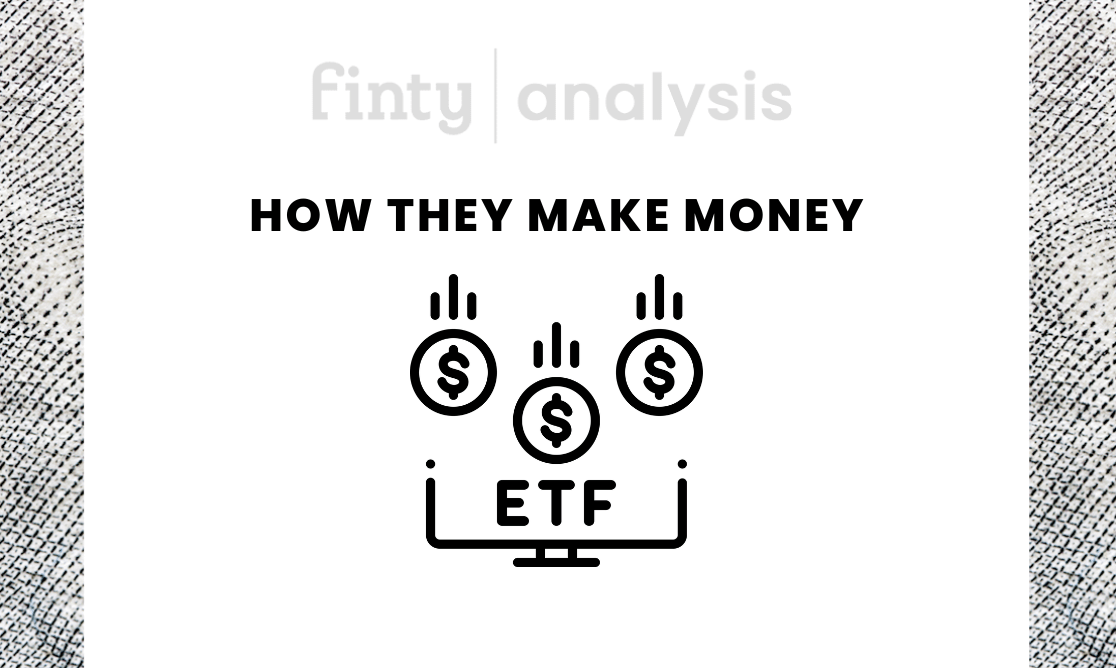- ETFs (Exchange Traded Funds) give investors and traders exposure to a basket of assets.
- ETFs are available in specialized markets, for instance, tech, financials, commodities, etc.
- Most ETFs offer zero commissions on transactions for traders or investors.
An Exchange Traded Fund (ETF) is a publicly-traded asset comprising a basket of underlying assets. For instance,Cathie Woods ARK Innovation ETF (NYSE:ARKK) contains a basket of tech stocks, likeTesla,Coinbase,Zoom,Roku, and others.
The first ETF appeared on the Canadian Stock Exchange in 1990. The popularity of the asset with passive investment strategies saw the asset class experience huge adoption and growth over the last 30+ years.
In 2003, there were 123 ETFs available to trade on US exchanges. 20 years later, there are over 2,600 ETFs available.

Coming up next
What does an ETF do?
An ETF purchases stock holdings in listed companies.
They lump these assets into one financial vehicle.
This strategy provides investors or traders exposure to the price action in the underlying assets.
The aggregate price action of the underlying assets sets the trading price of the ETF.
ETFs are popular with investors that want exposure to a wide range of stocks in a single industry.
There are ETFs available in every market.
A fund manager allocates the weighting of the basket of assets in the ETF, adding or removing assets at their discretion.
How does an ETF work?
An ETF trades on a stock exchange under a specific ticker symbol. If the investor or trader wants to put money into the ETF, they can buy it directly through their stock trading platform.
Typically, ETFs do not have any trading fees for buying or selling stock in the financial asset. As a result, they are incredibly popular with private investors and traders because they don't charge any commissions.
Leading Wall Street financial firms like Vanguard, Blackrock, and Fidelity offer ETFs to their investors.
ETFs, offer investors a "passive" strategy, where the fund manager handles the allocation of the assets to the basket.
As a result, investors only have to buy and hold the ETF until they reach their price target.
ETFs are suitable for short-term or long-term investment strategies. Typically, they don't have the same level of volatility as buying the stocks in the ETF individually.
How an ETF makes money
An ETF makes money by adding assets to the fund and riding upside momentum in the price action of the underlying stocks or financial assets comprising the fund.
The fund manager banks on the assets showing annual growth for their investors, attracting capital flows into the fund, which they use to buy more stocks and provide liquidity to investors.
If you're an investor or trader, you'll make money going "long" or "short" the fund. Going long means buying the ETF, riding the momentum to the upside.
"Shorting" means you sell the ETF, making money when the price action drops.
ETFs are less volatile than purchasing single stocks. Therefore, they suit long-term investment strategies more than intra-day trading strategies. However, not all ETFs are profitable.
For instance, Cathy Woods ARK innovation fund saw good returns during the bull market of 2020 and 2021 but huge losses as investors rotated out of tech stocks in late 2021 and early 2022.
Future growth engine
ETFs continue to be popular with new investors and those using passive strategies.
A passive strategy means that the investor relies on the fund manager's due diligence and management experience.
As a result, they don't have to spend time researching the right stocks to buy for their portfolio.
However, the turn in the economy in 2022 saw investors rotate out of ETFs and back to stock-picking strategies.
It seems that passive investment strategies involving ETFs are good for bull markets.
However, they don't provide the same returns for investors in bear markets.
Competitors
ETFs are financial instruments available from leading FinTech firms and financial service providers, like Vanguard.
ETFs saw huge growth over the last 30 years in the face of a loose-monetary policy from the Federal Reserve.
They compete with other assets like mutual funds for capital flows.
However, with the market turning from a bull to a bear in 2022, ETFs must compete with fund managers adopting active investment strategies.

